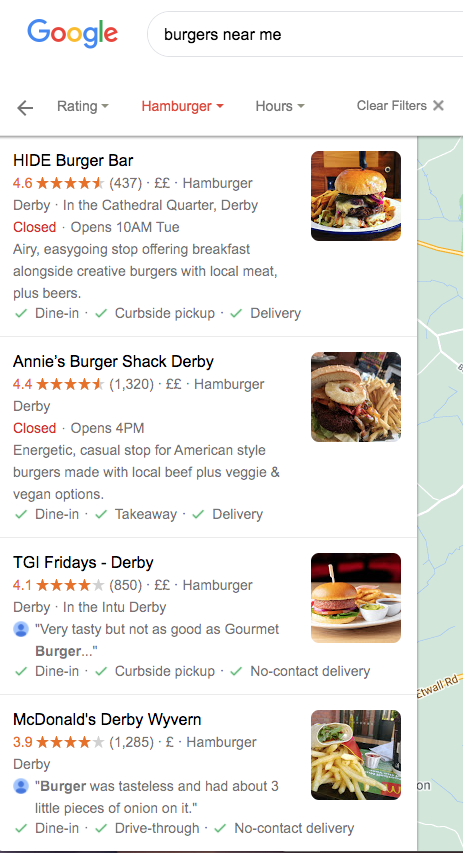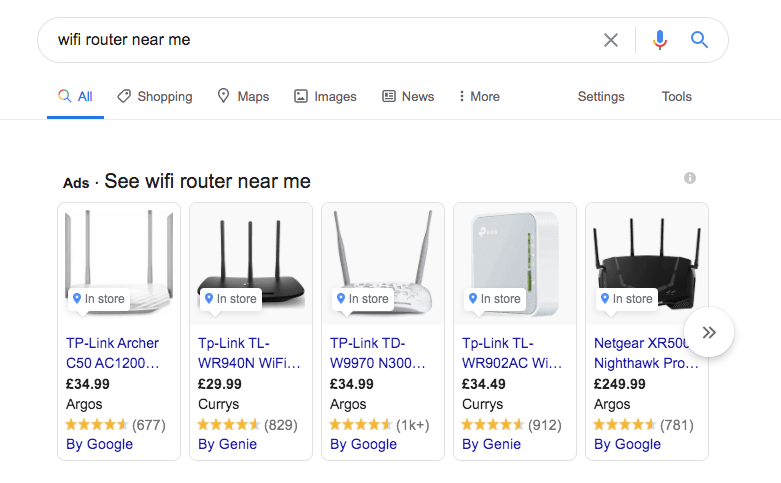It would be easy to think that as the pandemic has forced people indoors and online sales have soared, there is no longer a place for physical shops. With the high street facing crisis, and big brands making large redundancies, it’s a worrying time for many small business owners.
However, consumers have actually become more invested in their communities. A sense of togetherness which hasn’t been seen since wartime now rallies neighbours as they check in on one another. From a search perspective, ‘near me’ searches have continued to grow, and there is a lot of interest in supporting local businesses. In fact, people are looking to shop closer to home with 67% saying they plan to shop more locally during this holiday season.
There is a huge opportunity for physical stores to benefit from this rise in online shopping – it’s just knowing how to take advantage of it. Let’s take a look at how you can bridge the gap between your online and offline marketing.
The need to focus on local digital marketing
New data shows there’s a massive “untapped opportunity” for multi-location brands to market more. With 77% complaining that executing a local-digital marketing strategy across all their stores is very challenging, those who figure out how to do it well have a lot to gain.
There are different challenges depending on what type of business you have. If you’re a franchise, you can be bound by marketing guidelines from national stores. Whilst it’s still your responsibility to bring in local customers, there’s a sense of being part of a bigger team but one that may not be that supportive. Taking the initiative and focusing on what you can do at a local level is important; it helps you to build a rapport with the community and, whilst you may be a big brand, establish yourself as a unique voice in the area you’re in.
Similarly, if you’re a small-medium independent business with a few different locations, creating a sense of unity across multiple stores can be challenging. There’s a general aspiration to improve local marketing effectiveness next year with 61% saying it’s a high priority, but it’s easy to see how this could be repeated the year after that.
The reason multi-location brands have been slow to focus on their local-digital marketing tactics is that it can be difficult to know where to start. In fact, 31% reported they had no locally targeted paid social media strategy. Having the right paid media behind your branding is imperative; whilst you may be a physical store first and foremost, having an online presence is now key to making your in-store experiences more streamlined and successful.
Bridging the gap with strategic hybrids
Developing the right online/in-store strategy for your business obviously requires insights that only you have access to. But the fundamentals of using online campaigns to drive people into your physical store are the same as the aim is to get more foot traffic as a result of online shopping booming.
A huge new trend is the act of researching a product online before going to pick it up in-store. This means that online advertising targets users who then seemingly don’t complete a purchase, but instead do so in person. That’s why it’s important to have the right tracking systems in place to ensure this online to offline jump isn’t missed. It’ll also highlight just how important it is for driving people to your physical location.
Click-and-collect has become hugely popular of late for good reason. It has always had many benefits, but more-so in a COVID world.
Looking online and then heading in-store enables shoppers to:
- Spend less time in-store browsing which reduces risk
- Access more information about a product to make more informed decisions
- Seek reviews and ratings from other users
- Price-check with competitors
- See and feel the physical product before purchasing, without delivery charges
- Speak to staff if they have any questions
If you’re looking to harness the potential of online shopping, pay-per-click ads are a great option. Whether you’re already running campaigns, are unsure of how to set them up or don’t have an online presence at all, Google’s new Local Service Ads are the answer to your problems.
Google’s Local Service Ads
As Google monitors the latest trends, it’s become more and more evident that local advertising is a growing sector. In response, they’ve expanded the features they offer to support small and large businesses with physical locations. Local Service Ads have been designed to boost the visibility of local independent stores and give them access to a wealth of customers. Better yet, you don’t even need a website to be able to use it.
Swerving away from their traditional pay-per-click model, local advertisers only have to pay when a customer contacts them – it’s free to just click the ad. The fact businesses don’t need to have a website to be listed makes Local Service Ads really accessible as 40% of small businesses still don’t have one.
LSAs make it easy for SMBs to gain trust too as their listings are backed by Google’s Guarantee badge. As customer reviews are highly influential, Google has made it easy for users to see what previous customers have to say, the business’ licensing information and how they can get in touch.
The pay-per-lead model makes it easy for less tech-savvy businesses to get on board with the idea and put a toe into the online advertising world. Google has also made it free to list ads on its Shopping Tab, something which previously was reserved for paid placements. Having been trialled in the US since early 2020, results show that businesses taking advantage of this see 50% more visits and average twice as many views.
4 ways online can boost your in-store activity
1. Local business service attributes
These new ad attributes are a practical addition which helps users decide which business is right for them. They’re an easy way for searchers to see what services are on offer e.g dine-in, delivery, contact-less delivery, curb-side pickup and more. They are increasingly important during the pandemic and can really help you stand out from the crowd.

2. Local inventory ads
The markers on shopping ads such as ‘in-store’ or ‘pick up Wednesday’ make it easy for shoppers to transition from online to in-store purchasing. It’s a big persuasive feature for shoppers who don’t want to pay or wait for delivery so can make all the difference when it comes to driving searchers to physical stores.

3. Smart bidding for store sales
This is an extension of smart bidding for store visits and focuses on more than just driving foot traffic. It allows advertisers to upload their physical store data and optimise their ads from it.
This will suit larger businesses due to the volume of data needed but it really lends itself to the trend of researching a product online and buying it offline. This feature also encompasses the popular “click-and-collect” option.
4. PPC optimisation
There’s little point determining a strategy to drive online visitors to your physical store if they aren’t going to see your ads. Ensuring your campaigns are optimised to bring in the best types of customers is the way forward. Free software like Adzooma is designed to help you manage, automate and optimise your online advertising in just a few clicks. And, being completely free, it’s one of the most cost-effective ways to help you benefit from online shopping.
Spend the time building a local online presence
It can be tempting to stick to more traditional forms of advertising or not tailor your online ads to a local level, especially if you’re just starting out. But there are untapped opportunities for stores with multiple local locations or small independent businesses to thrive through local search.
Whilst online shopping is more popular than ever because of the convenience and safety it offers, physical stores can offer the same benefits and more, if only it can shout about it in the right way.
Building an online-offline hybrid marketing strategy will ensure your brand, whatever size, prospers in this ever-changing world.




